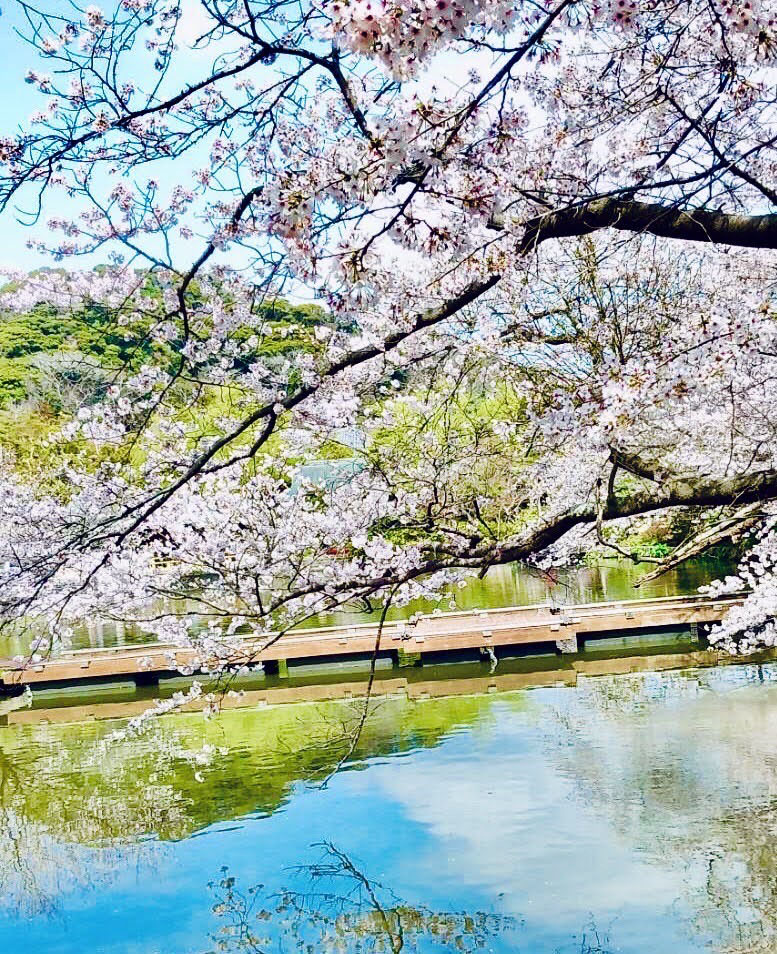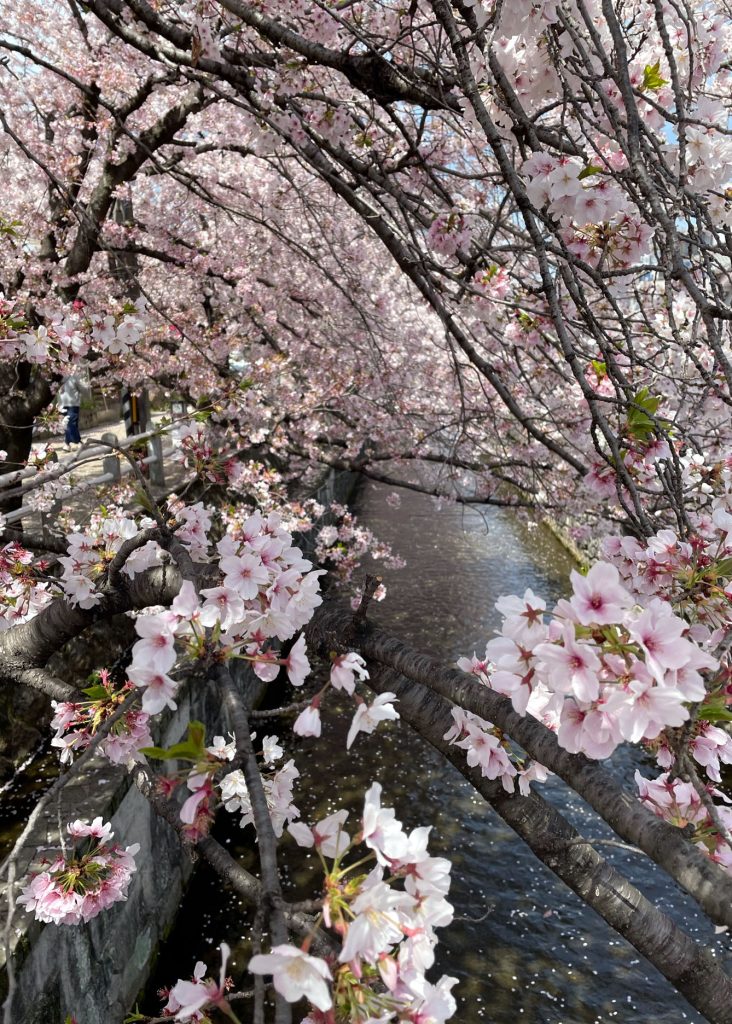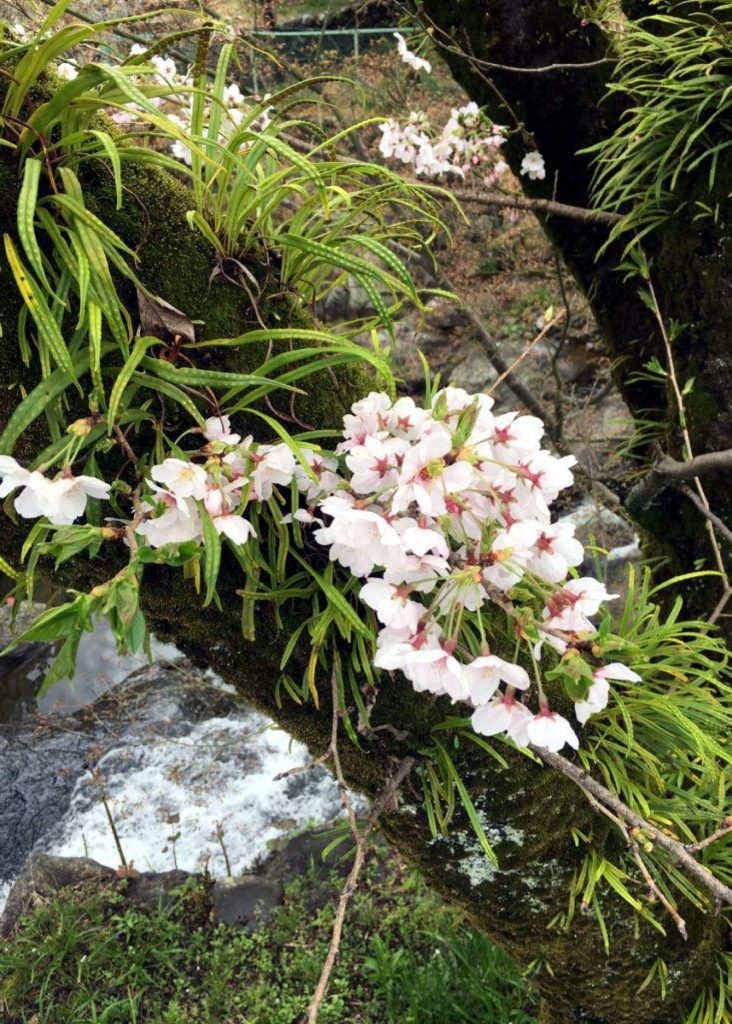
The Philosopher’s Path is a 2-kilometer-long walking trail that runs between the Kumano Nyakuoji Shrine near Nanzenji Temple and Ginkakuji Temple in Kyoto. It is named after Nishida Kitaro, a philosopher who was a professor at Kyoto University in the early 20th century, and who used to walk this path every morning to ponder his thoughts.
The canal that runs alongside the path is a diversion canal drawn from Lake Biwa, the largest lake in Japan. While the nearby Shirakawa River flows from north to south following the elevation, the artificially created canal flows from south to north.
The Philosopher’s Path is a beautiful section of nature that changes with the seasons, with cherry blossoms in spring, lush green leaves in early summer, and colorful autumn leaves in fall. It is one of Kyoto’s most popular walking paths, and is especially famous for its cherry blossoms. Along the path are some 400 cherry trees of the “Kansetsu Sakura” variety, which were donated by the Japanese painter Hashimoto Kansetsu.
The area is also home to a number of temples and shrines, including Nanzenji Temple and Otoyo Shrine, so there is plenty to see and do. There are also many Kyoto-style restaurants and souvenir shops in the back alleys and lanes, and this year in particular has been bustling with foreign tourists.
京都南禅寺近くの熊野若王子神社から銀閣寺の間を結ぶ、約2kmに渡る散歩道を人呼んで「哲学の道」と言います。20世紀初期の哲学者である京都大学教授 西田幾太郎が、毎朝この道を歩いて思索に耽っていたことにちなんで名付けられました。
脇を流れる疏水は、日本最大の湖である琵琶湖から引かれた疎水で、付近を流れる白川は標高に従って北から南へ向かって流れる一方で、人工的に作られた疎水は南から北へ流れています。
春は桜、初夏は木々の緑、秋は紅葉と四季折々に景色が変化する自然の美しい区間で、京都で最も人気のある散歩道です。特に桜の名所として有名であり、道沿いには日本画家 橋本関雪によって寄贈された関雪桜が並んでいます。
周辺には南禅寺や大豊神社など、神社仏閣がいくつもあり見どころは満載です。また、裏道や路地には京都ならではの食事処やお土産店などもあり、特に今年は外国人観光客で賑わっています。









